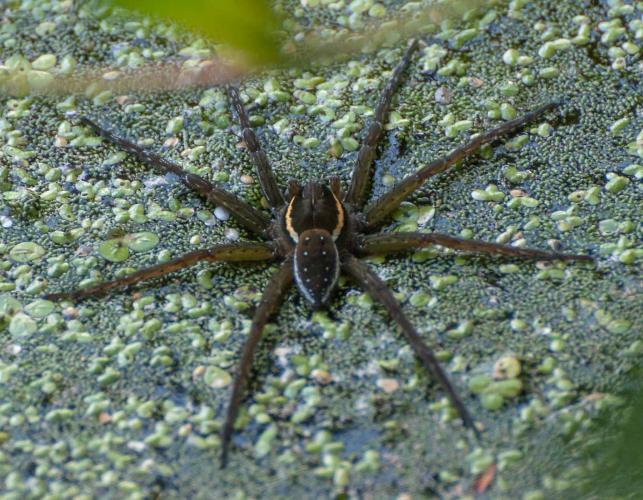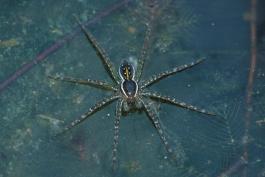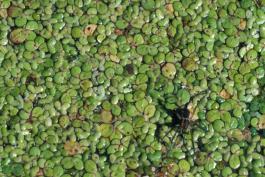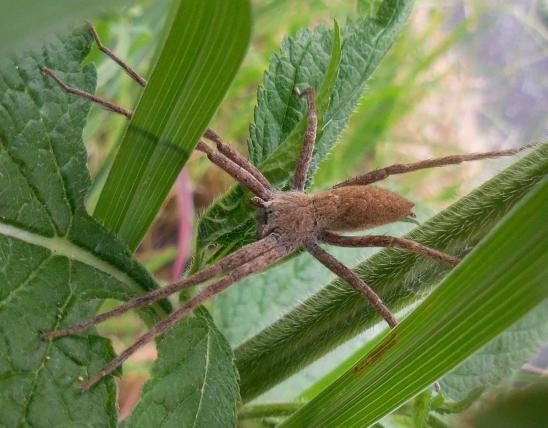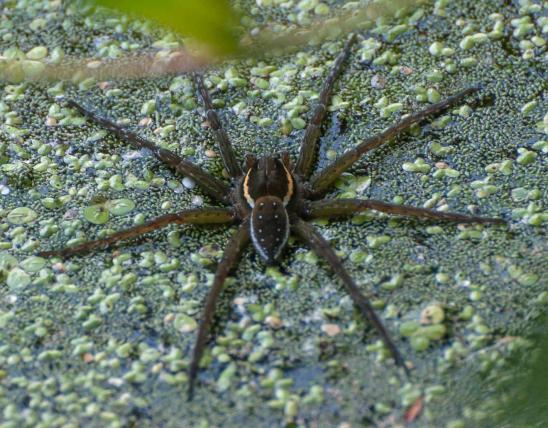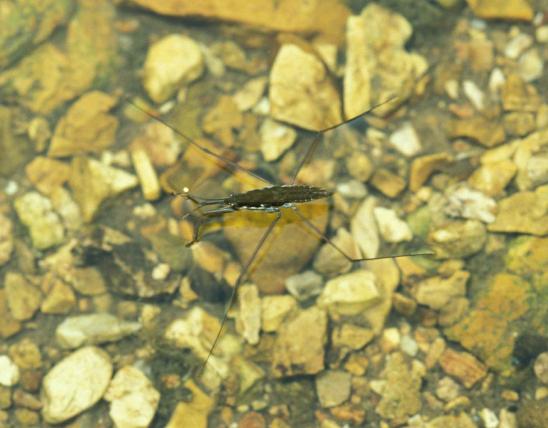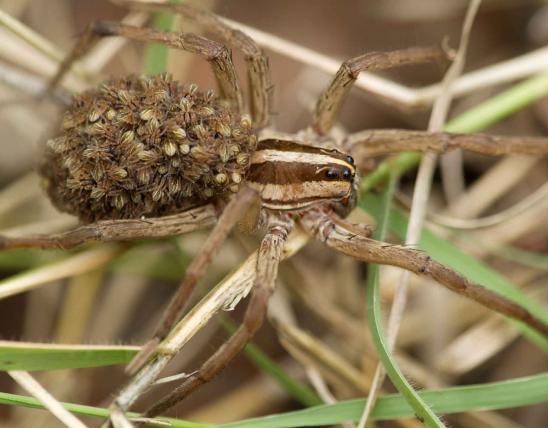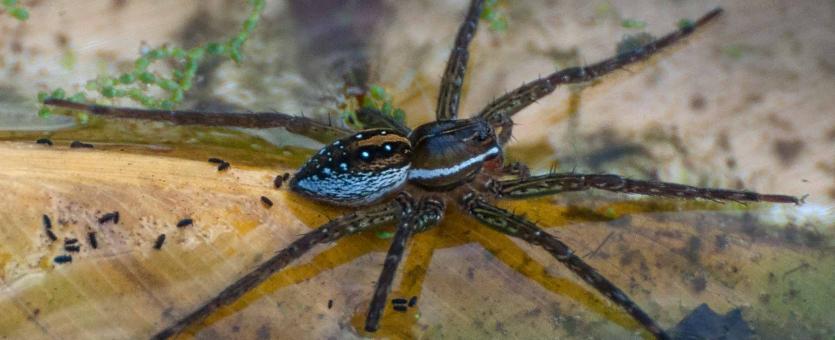
The spotted fishing spider lives in aquatic habitats and can run across the surface of water. This long-legged, dark-colored water spider is also distinctive in that the oval abdomen is smaller than the broad carapace (“head”). A pale, whitish-yellow stripe surrounds the dark carapace and sometimes also the abdomen. Viewed from above, several pairs of small, distinct white spots run down the length of the dark brown abdomen. Apparently, the common name “six-spotted fishing spider” comes from six distinct dark spots on this spider's rarely seen sternum (the underside of the carapace). The legs are robust and brown, dotted with white hairs. This spider runs quickly.
Length (not including legs): ¾ inch (females); ½ inch (males).

Statewide, in appropriate habitats.
Habitat and Conservation
Spotted fishing spiders live around ponds, slow-moving streams, swampy areas, and other damp places. They are able to run across the surface of water much like water striders and will dive for prey, including small tadpoles or aquatic insects. The spider encases its body in an air bubble in order to submerge itself, often for several minutes.
Food
Aquatic insects are at the top of the bill of fare. Tadpoles and tiny fish may also be eaten. There is at least one documented instance of a spotted fishing spider eating an adult Blanchard's cricket frog, along the edge of a small stream in Pettis County.
When terrestrial or flying insects fall accidentally in the water, fishing spiders can feel the vibrations their struggles create on the surface of the water. They rush across the water to take advantage of this food that drops down from the sky.
Life Cycle
As a general rule, spiders in temperate areas hatch from eggs in spring and spend the growing season eating, maturing, mating, and laying eggs. Female spiders are usually much larger than males and sometimes eat the males after mating. Females continue creating egg cases as long as the weather holds out. As temperatures cool in fall, their metabolism slows, and they generally die when it freezes. Egg cases overwinter, and spiderlings hatch in spring.
Human Connections
A great many insects live in the water, including young mosquitoes, and anyone who doesn't like mosquitoes should appreciate this spider. Also, this spider is eaten by many species of fish, including bass, sunfish, catfish, and trout, so anglers can appreciate it, too.
Ecosystem Connections
In addition to the many fish that eat them, birds, amphibians, and reptiles also catch fishing spiders. The bullfrog is a chief predator. These (and many other spiders) are also stung and collected by certain wasps, which provision their nests with the comatose spiders to provide food for their larvae.
One especially interesting predator of fishing spiders (Dolomedes spp.) is a blue-black spider wasp called Anoplius depressipes. This wasp has specialized flattened front feet that are fringed with hairs, which allow it to walk on water just like its prey. When transporting a spider, the wasp grasps the spider with its middle or hind legs, faces forward, then extends its forelegs and uses them like water skis while it propels itself and its prey across the top of the water, beating its wings. This spider wasp sometimes dives down into water to chase its prey, since water spiders often swim underwater when frightened.

